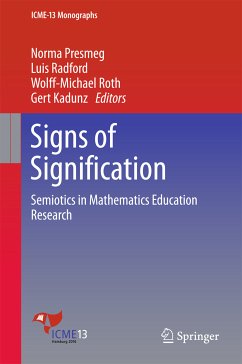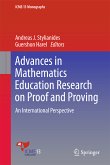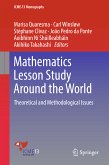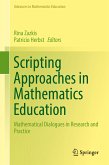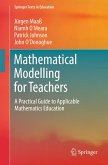This book discusses a significant area of mathematics education research in the last two decades and presents the types of semiotic theories that are employed in mathematics education. Following on the summary of significant issues presented in the Topical Survey, Semiotics in Mathematics Education, this book not only introduces readers to semiotics as the science of signs, but it also elaborates on issues that were highlighted in the Topical Survey. In addition to an introduction and a closing chapter, it presents 17 chapters based on presentations from Topic Study Group 54 at the ICME-13 (13th International Congress on Mathematical Education). The chapters are divided into four major sections, each of which has a distinct focus. After a brief introduction, each section starts with a chapter or chapters of a theoretical nature, followed by others that highlight the significance and usefulness of the relevant theory in empirical research.
Dieser Download kann aus rechtlichen Gründen nur mit Rechnungsadresse in A, B, BG, CY, CZ, D, DK, EW, E, FIN, F, GR, HR, H, IRL, I, LT, L, LR, M, NL, PL, P, R, S, SLO, SK ausgeliefert werden.

